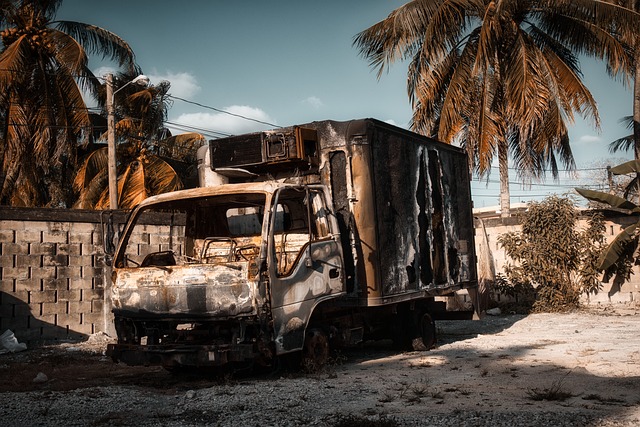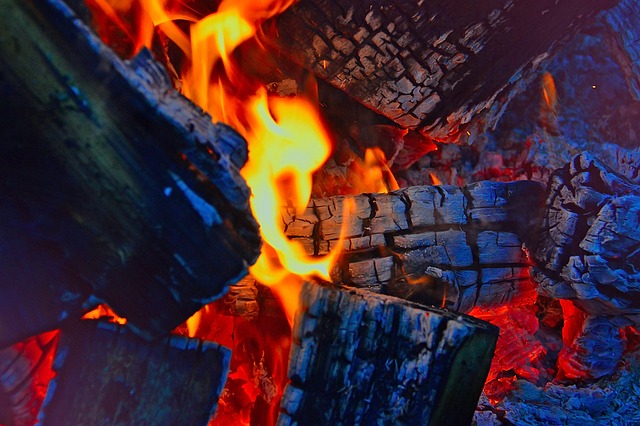In California's competitive real estate market, "as-is" property sales are gaining popularity for homes damaged by fires. This approach offers buyers lower costs and skips renovation, aiding homeowners facing physical and emotional challenges. However, understanding local regulations, zoning laws, and building codes is crucial to ensure compliance. Fire damage can devalue properties, so thorough inspections are key to identifying affected areas and planning repairs. Evaluating home value requires a nuanced approach considering severity, time elapsed, and restoration efforts. Legal obligations include transparent disclosures of known defects, fostering trust between sellers and buyers. Strategic marketing involves accurate documentation, emphasizing potential over past damage, using high-quality visuals, and staging versatile living spaces. "How to sell a house with fire damage California" is a valuable SEO keyword for this approach.
In California, as-is property sales have gained traction due to various factors, including fire damage. This article delves into the intricate world of selling homes with fire damage, offering a comprehensive guide for both sellers and buyers. We explore key aspects such as understanding the legal framework, assessing home value impacts, marketing strategies, and navigating the buying process. For those questioning “how to sell a house with fire damage in California,” this is your go-to resource. Discover valuable insights tailored to California’s real estate landscape.
- Understanding As-Is Property Sales: A California Perspective
- Common Causes of Fire Damage in Residences
- Evaluating the Impact of Fire Damage on Home Value
- Legal and Ethical Considerations for As-Is Transactions
- Marketing Strategies for Selling a Fire-Damaged Property
- The Buying Process: Finding Opportunities in As-Is Listings
Understanding As-Is Property Sales: A California Perspective

In California, as-is property sales have become an increasingly popular option for both homeowners and real estate investors. This type of sale involves buying a property “as is,” meaning the buyer accepts the current state of the property without any repairs or renovations being made by the seller. It’s particularly relevant when dealing with homes that require significant repairs, such as those damaged by fire. Fire damage can leave behind not just physical scars but also emotional trauma for homeowners, and selling an affected property as-is offers a practical solution.
For prospective buyers, purchasing a house with fire damage in California through an as-is sale presents an opportunity to acquire real estate at potentially lower costs. This route skips the often lengthy and expensive renovation process, making it appealing for those seeking a quick transaction or looking to invest in distressed properties. Understanding local regulations and zoning laws is crucial when considering such sales, ensuring compliance with building codes and safety standards, especially in California’s stringent market.
Common Causes of Fire Damage in Residences

Fire damage can significantly impact a home’s value and appeal, especially in competitive real estate markets like California. Common causes include kitchen accidents, electrical failures, or faulty heating systems. Over time, these incidents can lead to extensive harm, affecting structural integrity, insulation, and even the air quality within the property.
When preparing to sell a house with fire damage in California, understanding the extent of the issue is crucial. Homeowners should conduct thorough inspections to identify affected areas, from charred walls and ceilings to potential water damage from fire suppression systems. Prompt repair and renovation are essential to mitigate risks, enhance the home’s attractiveness to buyers, and ensure compliance with local building codes for a successful as-is property sale.
Evaluating the Impact of Fire Damage on Home Value

Evaluating the impact of fire damage on home value in California involves a meticulous process. While fire can leave visible scars, the extent of the effect on property value varies significantly based on several factors. These include the severity of the damage, the time since the incident, and the effectiveness of restoration efforts.
Prospective buyers often perceive fire-damaged properties with caution. However, with proper repairs and renovations, it’s possible to mitigate these concerns. Professional appraisers can assess the work needed, comparing it to similar homes in the area that have undergone comparable restaurations. In many cases, California’s robust real estate market and strong buyer demand can help rebound property values, even after significant fire damage. How to sell a house with fire damage in California effectively centers around transparent communication about the extent of damage and the quality of restoration work undertaken.
Legal and Ethical Considerations for As-Is Transactions

When considering an as-is property sale, especially in California, understanding legal and ethical considerations is paramount. These transactions can be complex due to potential undisclosed issues like fire damage. In California, sellers are typically required to disclose known defects or hazards, including fire damage that could impact a home’s structural integrity or safety. Failure to do so may lead to legal repercussions, as buyers have rights under the state’s Real Estate Transaction Act.
Ethically, transparency is key. Fire-damaged properties require specific repairs and disclosures to ensure fair dealing. Sellers should provide detailed information about the extent of damage, previous restoration efforts, and any potential risks. Buyers, in turn, are responsible for conducting thorough inspections and due diligence. This open communication fosters trust and protects both parties from unexpected surprises, ensuring a smoother as-is property sale process in California.
Marketing Strategies for Selling a Fire-Damaged Property

Selling a property with fire damage can be challenging, but with the right marketing strategies, it’s entirely possible in competitive markets like California. The first step is to accurately assess and document the extent of the damage. Engage a professional inspector who can provide detailed reports on repair costs and potential red flags. Utilize these reports as a selling point by emphasizing the transparency and thoroughness of your approach.
In marketing materials, focus on the property’s potential rather than dwelling on the past damage. Highlight its location, unique features, and any recent renovations that enhance its appeal. Use high-quality photography to showcase the space and its possibilities. Consider creative listings that tell a story of transformation, attracting buyers who embrace the challenge of restoring a home to its former glory or even transforming it into something new entirely. For instance, stage the property to emphasize versatile living spaces, emphasizing that it can accommodate various lifestyles and design preferences.
The Buying Process: Finding Opportunities in As-Is Listings

When considering how to sell a house with fire damage in California, as-is listings present unique opportunities for savvy buyers. The buying process involves a meticulous inspection and assessment of the property’s current state. With these listings, you can often secure a deal at a lower price compared to traditional real estate transactions, making it an attractive option for investors or those looking to renovate.
By opting for an as-is sale, buyers bypass the usual repairs and renovations, saving time and potential costs. This approach is especially appealing in California’s competitive market where quick decisions can make all the difference. Fire-damaged homes can be transformed into desirable properties with careful planning and strategic remodeling, offering a rewarding experience for those willing to take on the challenge.
Understanding the complexities of as-is property sales, especially in California, involves navigating legal and ethical considerations while recognizing the unique marketing opportunities these properties present. By comprehending common causes of fire damage and its impact on home value, you can effectively evaluate and market a fire-damaged property for a successful sale. Remember, when it comes to selling a house with fire damage in California, knowing how to navigate this process is key to finding buyers and securing the best outcome.






